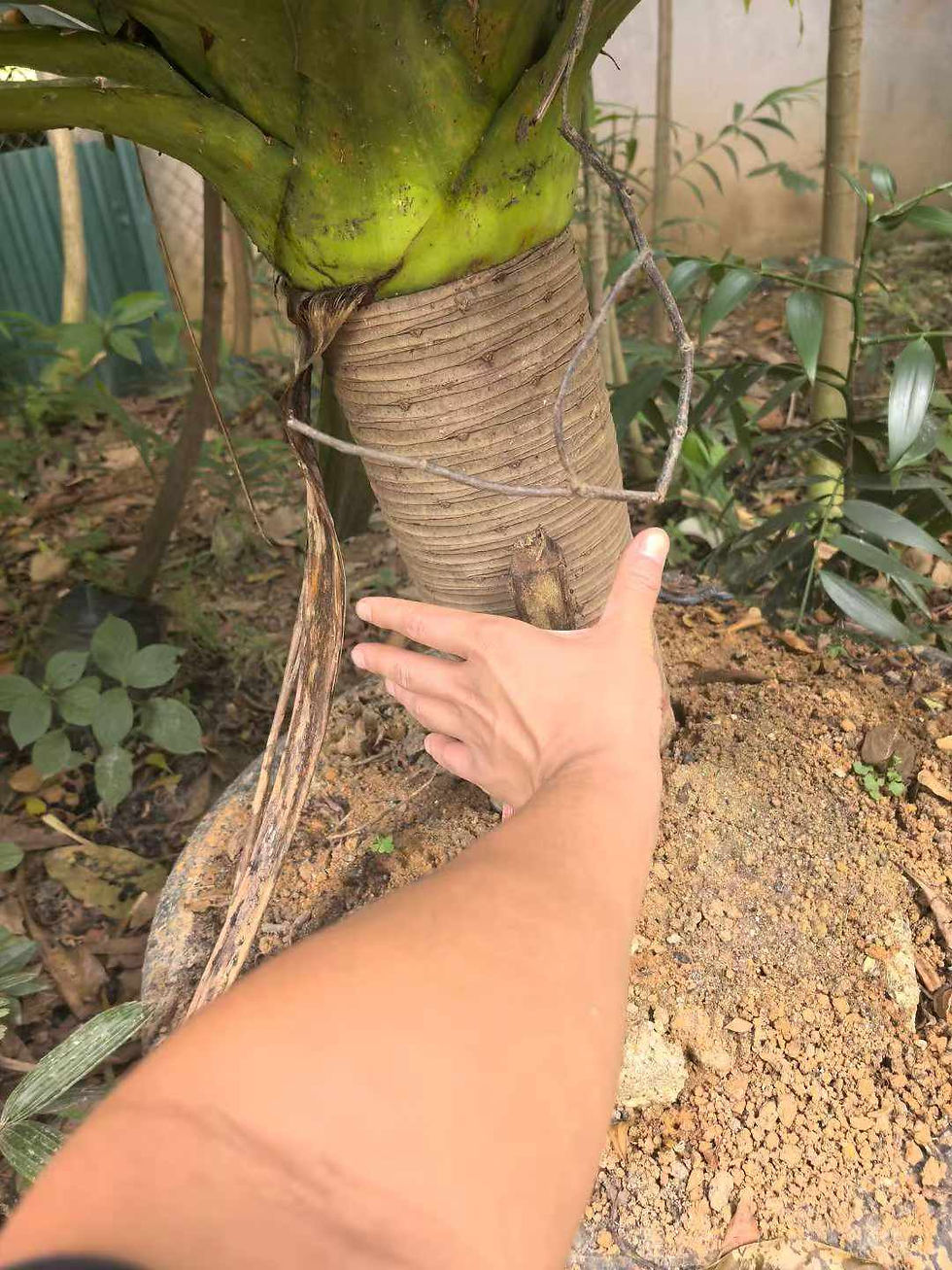Cananga odorata seeds mature in March. Cananga odorata (Lamarck) J. D. Hooker & Thomson, Fl. Ind. 1: 130. 1855.
依兰 yi lan
Trees or shrubs. Bark pale gray. Branchlets dark colored, striate with age, minutely pubescent when young, glabrescent. Petiole 1-2 cm, narrowly grooved; leaf blade in 2 ranks, ovate, oblong, or broadly elliptic, 9-23 × 4-14 cm, membranous to thinly papery, often drying black, glabrous when mature except for mostly whitish pubescence along midvein and secondary veins, secondary veins 7-15 on each side of midvein, base rounded, obtuse, or truncate and often inequilateral, apex acute to acuminate. Inflorescences axillary or on short woody branches, racemose or cymose, 1- or several flowered; peduncle 2-5 mm; bracts minute, deciduous. Flowers pendulous. Pedicel 1-5 cm, pubescent, bracteolate. Sepals ovate, ca. 0.7 mm, pubescent, connate at base, apex acute and reflexed. Petals green, turning yellow and inside basally with a purplish brown blotch, linear to linear-lanceolate, 5-8 × 0.5-1.8 cm, tomentose and with several veins minutely pubescent, basal claw small. Stamens oblong-oblanceolate, 0.7-1 mm; connectives apically acute, pubescent. Carpels 10-12, ca. 4 mm, puberulent when young, glabrescent; stigmas clavate, lamellate, fused, with a U-shaped groove on inner side running down to base of ovary to form a convex pileate disk. Monocarp stipes 1.2-1.8 cm; monocarps nearly black, ovoid, globose, or oblong, 1.5-2.3 × ca. 1 cm, pulpy, glabrous. Seeds 2-12 per monocarp, pale brown, in 2 series, surface pitted. Fl. Apr-Aug, fr. Oct-Mar.

































